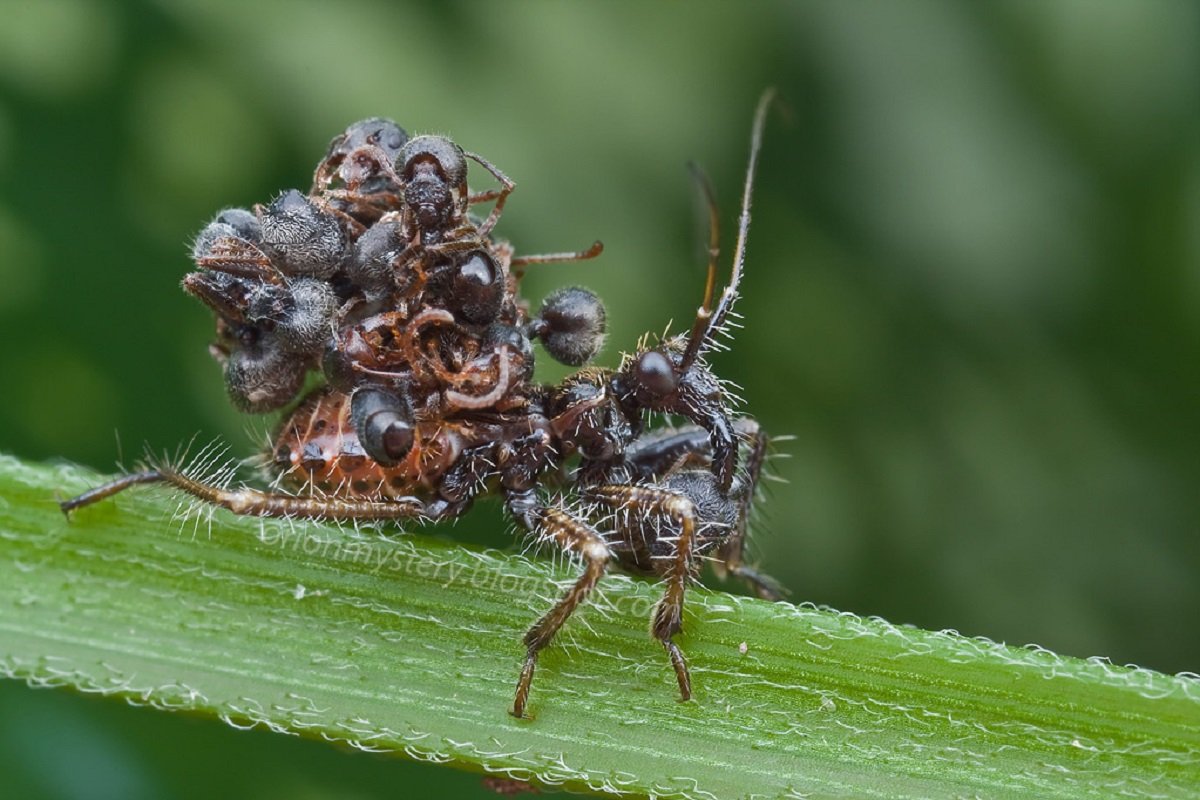In parts of east Africa and Asia, there is an insect with a distinctive defense mechanism: It disguises itself by covering its body in the corpses of other insects.
Known by its scientific name Acanthaspis petax, the insect is a type of assassin bug—a term that refers to thousands of species of insects that are able to pierce their prey and suck out body fluids.
Acanthaspis petax does this, but its method of hunting and avoiding being hunted makes it stand out among fellow assassin bugs.

Insect researchers have noted that the bug tends to move around with a "backpack" on its abdomen. This is sometimes made of plant matter; other times it is made out of the empty corpses of other insects.
It may sound gruesome, but the backpack serves a vital purpose for Acanthaspis petax.
Andrew Deans, a professor in the department of entomology at the Pennsylvania State University College of Agricultural Sciences and director of the Frost Entomological Museum, told Newsweek: "My understanding is that this species is predominantly a predator of ants. Ants are social, and they communicate extensively with chemicals. I bet that these assassin bugs are mainly trying to camouflage themselves chemically from the ants, who otherwise would put up a very effective defense—secreting chemicals to recruit nest mates, for example."
Researchers have also noted that the "backpack" of plant matter or dead insects may also serve as a defense mechanism. In one 2002 study, researchers forced these camouflage-using bugs into a situation with potential predators and found that the disguise had the effect of confusing the predators.
In the same study, it was also noted that the "backpack" could be released if the insect was threatened, serving as a distraction that allows the insect to escape. In this sense, it serves a similar purpose to a lizard's tail, which may become detached to allow lizards to run away from predators.
Smithsonian Magazine reported that Acanthaspis petax may carry as many as 20 ants at a time, all bound together by a sticky substance, as part of this disguise.
Acanthaspis petax is not the only insect that has been observed using the corpses of other insects as a disguise.
"Green lacewing larvae also use this strategy—corpse camouflage," said Deans. "Their bodies are covered in setae and tubercles that help them hold on to aphid corpses. They can act like a "wolf in sheep's clothing," preying on aphids with impunity. Aphids are often tended by ants, who feed on the aphids' honeydew, so this strategy helps them evade detection."
Uncommon Knowledge
Newsweek is committed to challenging conventional wisdom and finding connections in the search for common ground.
Newsweek is committed to challenging conventional wisdom and finding connections in the search for common ground.
About the writer
To read how Newsweek uses AI as a newsroom tool, Click here.








